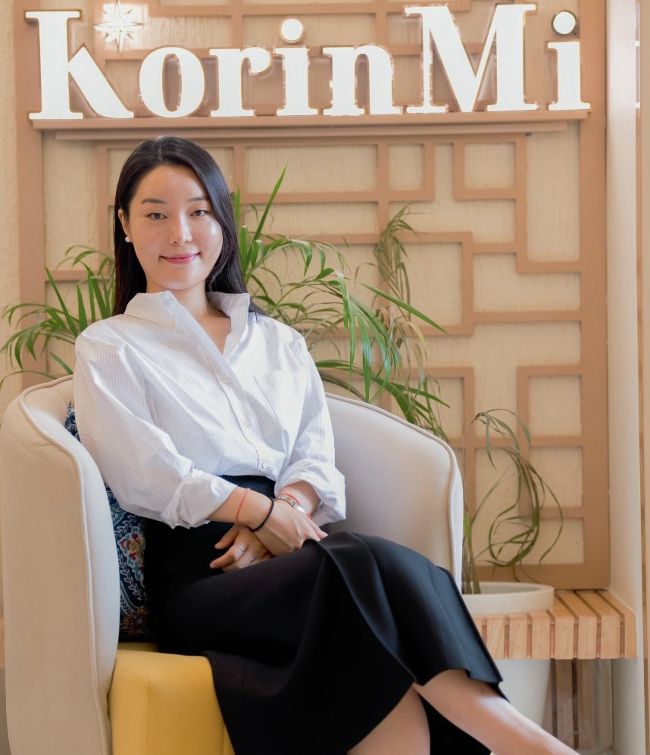Glow on!
Jenovia Daun Jung, Skincare Expert and Cofounder, KorinMi Skin Clinic, gives Vidhi Arya a lowdown about Korean skincare and looks at the real picture, beyond the hype.
Korean beauty trends have seen a meteoric rise in popularity over the past few years. One trend that has stood out from all is the Korean glass skin. Is it just hype or a real hope for glowing skin? Jenovia Daun Jung, Skincare Expert and Co-founder, KorinMi Skin Clinic, delves deeper into this trend.
Over the past decade, K-beauty trends have gained immense traction. Centred around innovation, quality and focus on inner beauty, K-beauty is ruling hearts. From hair spas, facials, to rigorous routines, what started as a cultural curiosity has now become a full-blown beauty phenomenon.
According to the Ministry of Food and Drug Safety, South Korea’s exports of cosmetic products increased by 20.6 per cent year-over-year to an all-time high of US$10.2 billion in 2024, reflecting a steady upward trajectory for the sector. As consumers continue to gravitate towards their unique formulations and trend-setting products, one trend is continuously being highlighted: the Korean glass skin.
GLASS SKIN: WHAT’S THE NOISE ABOUT?
The Korean Glass Skin trend, known for its dewy, ultra-smooth, poreless appearance, has transcended borders and carved out a loyal following across the globe, including in India. Social media feeds are flooded with radiant selfies, 10-step routines and shelves stocked with pastel-toned products promising the ultimate glow. But is this flawless finish achievable, or is it just another airbrushed fantasy?
“Korean Glass Skin is all about achieving flawless, radiant skin that appears smooth, pore-less and reflective—almost like glass,” says Jung. “It’s defined by an even skin tone, intense hydration and zero blemishes or acne.”
While the idea of ‘perfect’ skin isn’t new, Korean skincare takes a unique approach. The routine focuses less on covering flaws and more on healing, nourishing and strengthening the skin barrier. And it’s not just a trend—it’s a lifestyle. “It’s become a daily ritual for skincare enthusiasts worldwide,” Jung adds.
K-BEAUTY IN INDIA: HYPE OR HOPE?
India’s growing fascination with K-dramas, K-pop, and the ever-youthful skin of Korean celebrities has made Korean skincare a household name. “Over time, this ideal has become a global obsession, with people deeply influenced by Korean skincare routines and products. Social media platforms are flooded with influencers and users showcasing multi-step Korean skincare rituals, sharing product recommendations, and promoting the pursuit of the coveted ‘glass skin glow,’” explains Jung.
With every new trend comes a wave of imitation, and that’s where the challenge begins. “There’s a common misconception that Koreans are genetically blessed with perfect skin. That’s not true for everyone,” says Jung. “Many Koreans also struggle with skin concerns and follow dedicated routines and treatments.”
She warns that blindly copying Korean skincare routines off Instagram can do more harm than good. Jung shares a personal learning and says, “As someone who once damaged and then healed their skin, I’ve realised that not all Korean products seen on Instagram are suitable for Indian skin. Our climate, pollution levels and lifestyle choices are vastly different, which means Indian consumers need skincare that’s tailored to their specific skin types and conditions, not one-size-fits-all trends.”
VIRAL CONTENT: DOES IT REALLY WORK?
With the demand for Korean beauty skyrocketing, salons and skincare clinics across India have jumped on the bandwagon, offering treatments labelled ‘Korean Glass Skin Facial.’ But are these treatments actually effective?
“Many salons now offer ‘Korean glass skin facials,’ but most fail to evaluate whether these treatments are suitable for an individual’s skin,” Jung explains. “They often lack scientific backing and customisation.” She advocates a more diagnostic approach that considers hydration levels, pigmentation, UV damage and oil balance before recommending treatments.
Professional skin treatments that aim to achieve the glass skin look are becoming more advanced and personalised. Jung mentions options like Glass Skin Resurfacing Treatment for acne-prone or sensitive skin, and the Diamond Glass Treatment, which combines multiple gentle acids for immediate radiance, especially ideal for bridal prep or anti-ageing goals.

JENOVIA DAUN JUNG, SKINCARE EXPERT AND CO-FOUNDER, KORINMI SKIN CLINIC
But the real magic, she says, lies in the ingredients. “Clinically proven ingredients like salicylic acid, kojic acid, glycolic acid, mandelic acid and hyaluronic acid aren’t just buzzwords, they’re part of formulations that help maintain the skin’s pH, protein and mineral balance.”
GET GLOWING: CARE OR DARE?
While the goal is clear, the journey requires consistency and caution. It’s better to be careful and precise instead of bold and foolish, when it comes to Korean skincare regimes. “When done consistently and followed by proper post-treatment care, these treatments not only enhance glow but also treat deeper skin concerns like pigmentation, dullness and early ageing. They help restore the skin’s natural balance and maintain long-term skin health,” Jung explains.
And what about side effects? Jung is reassuring. “Not when done right. Because when everything is customised, there’s minimal risk. Mild redness or peeling may happen—but that’s just part of the healing process.”
So, is glass skin really attainable in a country as diverse and unpredictable as India? “Absolutely,” Jung affirms. “But only if you’re using treatments and products that suit your skin. Copy-pasting influencer routines rarely works. Understanding your skin’s condition and using the right solutions is key to real, lasting results.”
Korean skincare isn’t just about looking good for the ’gram. It’s about understanding your skin deeply, caring for it consistently and choosing treatments that respect your unique biology. In a world full of filters and fads, the real glow is always personal.